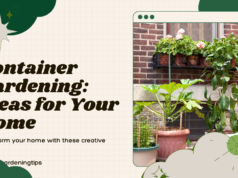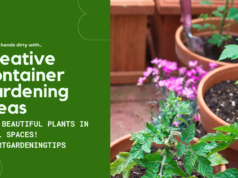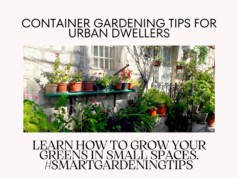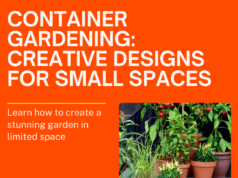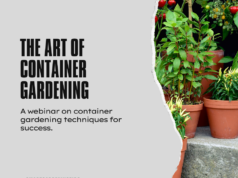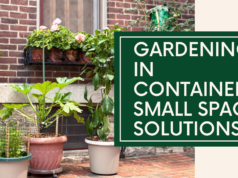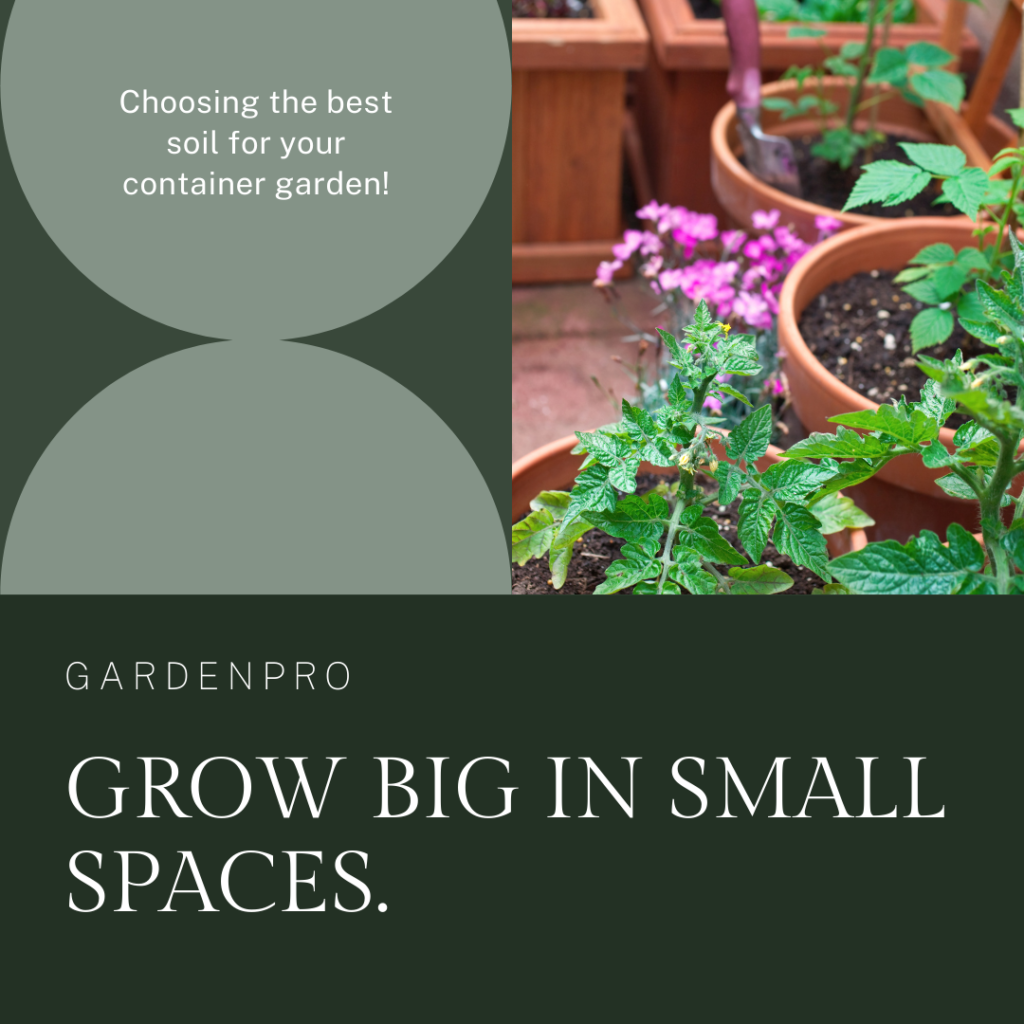
Welcome to our comprehensive guide on choosing the best soil for container gardening. Whether you have a balcony, patio, or limited outdoor space, container gardening allows you to cultivate a vibrant and thriving garden. However, to ensure the success of your plants, it’s essential to understand the importance of soil selection in this unique gardening method.
In this article, we will explore the significance of soil in container gardening and provide you with valuable insights on how to create the optimal environment for your plants to flourish.
Key Takeaways:
- Choosing the right soil is crucial for the success of your container garden.
- The soil impacts plant nutrition, moisture retention, root development, and overall plant health.
- Essential components, such as organic matter and good drainage, are necessary for a fertile environment.
- Consider using high-quality potting mixes or try making your own DIY soil blend.
- Different plants have varying soil requirements, so it’s important to choose the right soil for each plant type.
Understanding Container Gardening Soil
Before diving into the best soil options, it’s important to understand the unique challenges and requirements of container gardening soil. The soil you choose plays a crucial role in the success of your plants, as it directly impacts their growth and overall health. By gaining a deeper understanding of container gardening soil, you’ll be equipped to make informed decisions and create an optimal environment for your plants to thrive.
“The quality of your soil can make or break your container garden. It’s essential to choose a soil mix that provides the right balance of nutrients, moisture retention, and aeration.”
When it comes to container gardening, the soil has several important functions:
Nutrient Supply:
The soil serves as a reservoir of essential nutrients that your plants need to grow. It acts as a source of nourishment, supplying the necessary elements for healthy foliage, blooming flowers, and bountiful harvests in vegetable gardens.
Moisture Retention:
Container gardens require a soil mix that can retain moisture to provide a consistent water supply to the plants. Adequate moisture retention is especially critical in smaller containers that tend to dry out more quickly.
Aeration and Drainage:
Proper aeration and drainage are crucial for healthy root development and preventing waterlogged soil. Without adequate airflow and drainage, the roots may suffocate, leading to root rot and poor overall plant health.
When choosing the right soil for your containers, there are a few key factors to consider:
Container Size:
The size of your containers will impact the soil’s ability to retain moisture and provide sufficient aeration. Smaller containers may require a lighter soil mix with increased drainage, while larger containers can accommodate a richer mix with better moisture retention.
Plant Types:
Different plants have varying soil requirements. Some prefer well-draining soil, while others thrive in moisture-retentive soil. Understanding the specific needs of your plants will help you select the most suitable soil mix.
Purpose of Gardening:
Consider the purpose of your container garden. If you’re growing vegetables, you’ll want a soil mix that supports nutrient availability. For decorative flower arrangements, a mix with better water retention and balanced nutrients will promote vibrant blossoms.
By understanding these factors, you’ll be on your way to choosing the right soil mix for your container garden. In the next section, we’ll explore the importance of soil in container gardening and how it directly impacts plant nutrition, moisture retention, and root development.
Importance of Soil in Container Gardening
When it comes to container gardening, soil plays a crucial role in the success and vitality of your plants. The right soil provides essential nutrients, retains moisture, promotes healthy root development, and ensures overall plant health. Understanding the importance of soil in container gardening is key to creating thriving and bountiful gardens.
To appreciate the significance of soil in container gardening, let’s explore its impact on various aspects of plant growth:
Nutrition:
Container plants rely solely on the nutrients present in the soil as they cannot draw from surrounding ground. Therefore, using a nutrient-rich soil mix is vital for supplying the essential elements necessary for plant growth. A well-balanced soil provides plants with the necessary macro and micronutrients, ensuring they receive the fuel they need to thrive.
Moisture Retention:
Proper soil composition is crucial for moisture retention in container gardening. The right mix will hold water without becoming waterlogged, allowing plants to access moisture as needed. This is especially important during hot weather or when watering may be less frequent. A well-draining soil mix prevents root rot and helps maintain an optimal soil moisture level for plant health.
Root Development:
Container-bound plants have limited space for root expansion, making it crucial to provide them with loose and well-aerated soil. A loose soil mix allows roots to grow freely, promoting healthy and robust root development. The presence of beneficial microorganisms in the soil also aids in root growth and nutrient absorption.
Overall Plant Health:
The health of your plants is directly influenced by the quality of the soil. A well-nourished soil mix provides plants with the necessary resources to ward off diseases and pests, promoting overall plant health and resilience. Additionally, a healthy soil ecosystem supports a diverse microbial community that aids in nutrient cycling and disease suppression.
Soil is the foundation of your container garden. It not only provides support for your plants but also serves as a source of vital nutrients and moisture. Choosing the right soil and maintaining its health will contribute to the long-term success of your container gardening endeavors.
To visualize the impact of soil in container gardening, take a look at the comparison below:
| Effect | Poor Soil | Quality Soil |
|---|---|---|
| Nutrient Availability | Insufficient nutrients lead to stunted growth and nutrient deficiencies | Abundant nutrients support vigorous plant growth and vibrant foliage |
| Moisture Retention | Inadequate water-holding capacity results in water stress and wilted plants | Optimal water-holding capacity maintains moisture levels and healthy plants |
| Root Development | Compacted soil impedes root growth and limited nutrient absorption | Loose and well-aerated soil promotes robust root development and nutrient uptake |
| Plant Health | Vulnerable to pests, diseases, and nutrient deficiencies | Resilient to pests, diseases, and equipped with necessary nutrients |
The image above beautifully illustrates the relationship between soil and successful container gardening.
Now that you understand the significance of soil in container gardening, it’s time to explore the essential components that make up the perfect soil mix. In the next section, we’ll discuss the key ingredients necessary for creating a fertile environment for your plants.
Essential Components of Container Gardening Soil
To create the best soil for your container garden, it’s important to understand the essential components that make up a fertile potting mix. These components provide the necessary nutrients, aeration, moisture retention, and drainage required for healthy plant growth.
1. Organic Matter
Organic matter, such as compost or aged manure, is a vital component of container gardening soil. It enriches the soil with essential nutrients, improves water-holding capacity, and enhances microbial activity, creating a thriving environment for plants.
2. Peat Moss or Coir
Peat moss or coir (derived from coconut husks) improve the moisture-holding capacity of the soil while promoting adequate drainage. These components ensure that the plant roots have access to water while preventing waterlogging, which can lead to root rot.
3. Perlite or Vermiculite
Perlite and vermiculite are lightweight materials that provide excellent aeration in container gardening soil. They prevent the soil from becoming compacted, allowing the roots to access oxygen, promote healthy root development, and prevent overwatering.
4. Sand or Grit
Incorporating sand or grit into the soil mix helps improve drainage and prevents the soil from becoming overly compacted. These components ensure that excess water can freely flow out of the container, preventing waterlogged conditions that can harm the plant roots.
5. Micronutrients
Micronutrients, such as iron, manganese, zinc, and copper, are essential for plant growth and development. These nutrients play a crucial role in various metabolic processes and must be present in the soil mix to support optimal plant health.
6. pH Adjustments
Depending on the specific needs of your plants, you may need to adjust the pH level of the soil. Some plants prefer acidic conditions (lower pH), while others thrive in alkaline or neutral pH levels. Testing and adjusting the pH ensures that your plants can efficiently absorb the nutrients in the soil.
| Component | Role |
|---|---|
| Organic Matter | Enriches soil with nutrients, improves water-holding capacity, and enhances microbial activity. |
| Peat Moss or Coir | Improves moisture retention and drainage, balances water availability for plant roots. |
| Perlite or Vermiculite | Enhances aeration, prevents soil compaction, and promotes healthy root development. |
| Sand or Grit | Improves drainage, prevents soil compaction, and eliminates excess water. |
| Micronutrients | Supports essential metabolic processes for healthy plant growth. |
| pH Adjustments | Ensures optimal nutrient availability based on the specific needs of your plants. |
By ensuring that your container gardening soil contains these essential components, you’ll create an optimal environment for your plants to thrive. A well-balanced potting mix provides the necessary nutrition, drainage, and aeration, setting the foundation for a successful and bountiful container garden.
Best Potting Mixes for Container Gardening
When it comes to container gardening, choosing the right potting mix is essential for the success of your plants. The potting mix you use determines the availability of nutrients, moisture retention, and overall root health. In this section, we’ll explore some of the best potting mixes available in the market that can help you create thriving container gardens.
Organic Potting Mix
Organic potting mixes have gained popularity among gardeners who value sustainability and environmental friendliness. These mixes contain natural and organic ingredients, such as compost, coconut coir, and aged bark, which provide essential nutrients and promote healthy plant growth. Organic potting mixes are free from synthetic fertilizers and pesticides, making them ideal for those practicing organic gardening.
“Using organic potting mix not only nourishes your plants but also promotes a healthier ecosystem in your container garden.”
Organic potting mixes retain moisture well while maintaining good drainage, ensuring that your plants receive adequate hydration while avoiding waterlogging. This feature is especially important for container gardening, where excess water can lead to root rot and other plant health issues.
Peat-based Potting Mix
Peat-based potting mixes, also known as peat moss mixes, are widely used in container gardening. These mixes are formulated with peat moss, which is a highly absorbent material that retains moisture efficiently. Peat moss enhances water retention in containers, preventing rapid drying and providing a consistent water supply to the roots of your plants.
In addition to its water retention capabilities, peat-based potting mixes offer excellent aeration, allowing roots to access oxygen and preventing compaction. This porous structure promotes healthy root growth and helps prevent the soil from becoming overly compacted over time.
Recommendations for the Best Potting Mixes
Here are some of the top-rated potting mixes for container gardening:
- Espoma Organic Potting Mix
- Black Gold All Organic Potting Soil
- Fox Farm Happy Frog Potting Soil
- Miracle-Gro Moisture Control Potting Mix
These potting mixes have been highly rated by gardeners for their quality, performance, and plant-nurturing properties. They provide the necessary nutrients, moisture retention, and aeration for optimal plant growth in containers.
By choosing the right potting mix, you’ll be providing your plants with the perfect foundation for healthy growth and bountiful harvests in your container garden. Whether you opt for an organic potting mix or a peat-based mix, ensure that it aligns with the specific needs of your plants and gardening practices.
DIY Soil Mix Recipes for Containers
If you prefer to create your own soil mix for container gardening, we’ve got you covered. In this section, we’ll share two DIY soil mix recipes that you can easily make at home. Recipe 1 focuses on creating a lightweight and well-draining mix, while Recipe 2 emphasizes a nutrient-rich blend.
Recipe 1: Lightweight and Well-Draining Soil Mix
If you’re growing plants that require excellent drainage, such as succulents or herbs, this recipe is perfect for you! This mix ensures that excess water drains quickly, preventing root rot and other moisture-related issues. Here’s what you’ll need:
- 1 part peat moss
- 1 part perlite or vermiculite
- 1 part compost or well-rotted manure
Pro Tip: Mix the ingredients thoroughly to ensure a balanced consistency. Always wet the mix before planting to ensure proper moisture retention.
Recipe 2: Nutrient-Rich Soil Mix
If you’re looking to provide your plants with a nutrient-rich growing medium, this recipe is ideal. It’s excellent for vegetables, fruits, and flowering annuals. Here’s what you’ll need:
- 2 parts compost or well-rotted manure
- 1 part garden soil
- 1 part peat moss
Pro Tip: For an extra nutritional boost, add a slow-release organic fertilizer to the mix. This will ensure a steady supply of nutrients to your plants throughout the growing season.
With these DIY soil mix recipes, you can customize the growing medium to suit your specific plants’ needs. Whether you’re prioritizing good drainage or nutrient availability, these recipes will help you create the perfect soil mix for your container garden.
Tips for Choosing the Right Soil for Different Plants
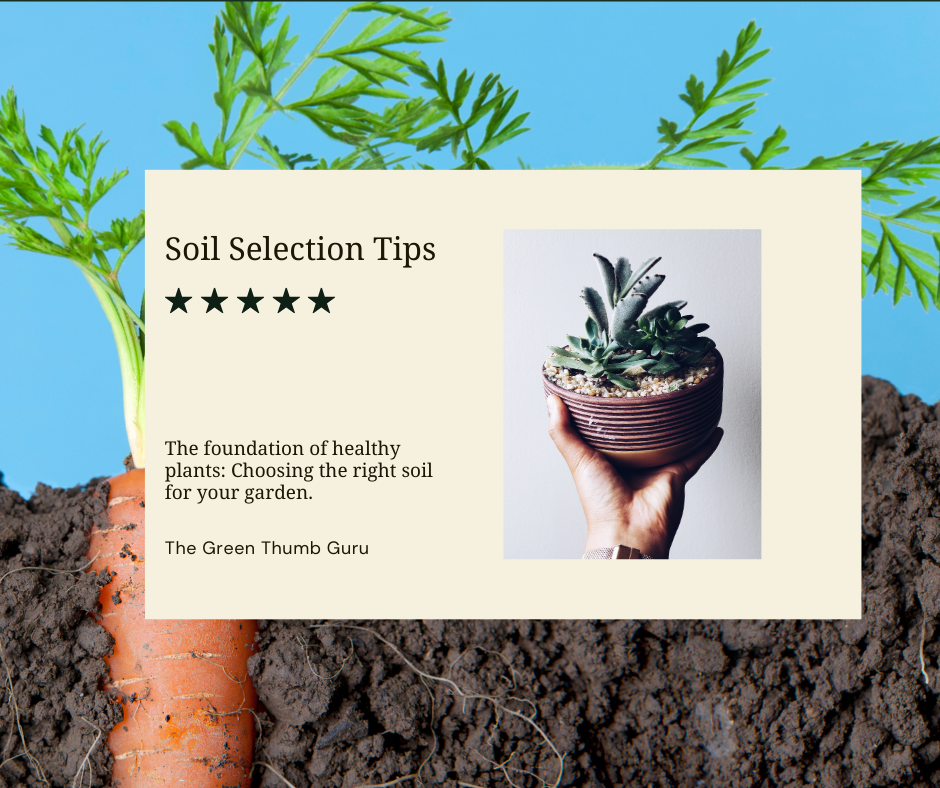
Different plants have unique soil requirements, and selecting the right soil is crucial for ensuring their health and growth in your container garden. Whether you’re growing flowering plants or vegetables, here are some valuable tips to help you choose the perfect soil:
1. Determine the Needs of Your Plants
Before selecting soil, it’s essential to understand the specific needs of the plants you intend to grow. Consider factors such as their preferred pH level, drainage requirements, and nutrient needs. Some plants, like flowering plants, thrive in well-draining soil with a slightly acidic pH, while vegetables often prefer nutrient-rich soil with excellent moisture retention.
2. Consider Soil Texture
The texture of the soil plays a significant role in plant growth. Some plants, such as succulents, prefer sandy soil that provides excellent drainage, while others, like herbs, thrive in loamy soil with a balanced mix of sand, silt, and clay. Understanding the preferred soil texture for your plants will help you select the right soil composition.
3. Choose Soil with Adequate Drainage
Most plants suffer when their roots sit in waterlogged soil for extended periods. To prevent waterlogging, select soil that promotes proper drainage. Look for potting mixes labeled as “well-draining” or those incorporating materials like perlite or vermiculite, which help improve soil drainage.
4. Opt for Nutrient-Rich Soil
Plants require essential nutrients for growth, and the soil you choose should be able to provide these nutrients. Look for potting mixes that incorporate organic matter, such as compost or aged manure, as they can enrich the soil and supply vital nutrients to your plants.
5. Consider pH Levels
The pH level of the soil affects nutrient availability to plants. Some plants, like azaleas and blueberries, prefer acidic soil, while others, such as tomatoes and peppers, thrive in slightly acidic to neutral soil. Conduct a soil test to determine its pH level and select soil that matches the requirements of your plants.
By following these tips, you can select the right soil for your flowering plants and vegetables, creating an optimal environment for their growth in your container garden.
Maintaining Healthy Soil in Container Gardens
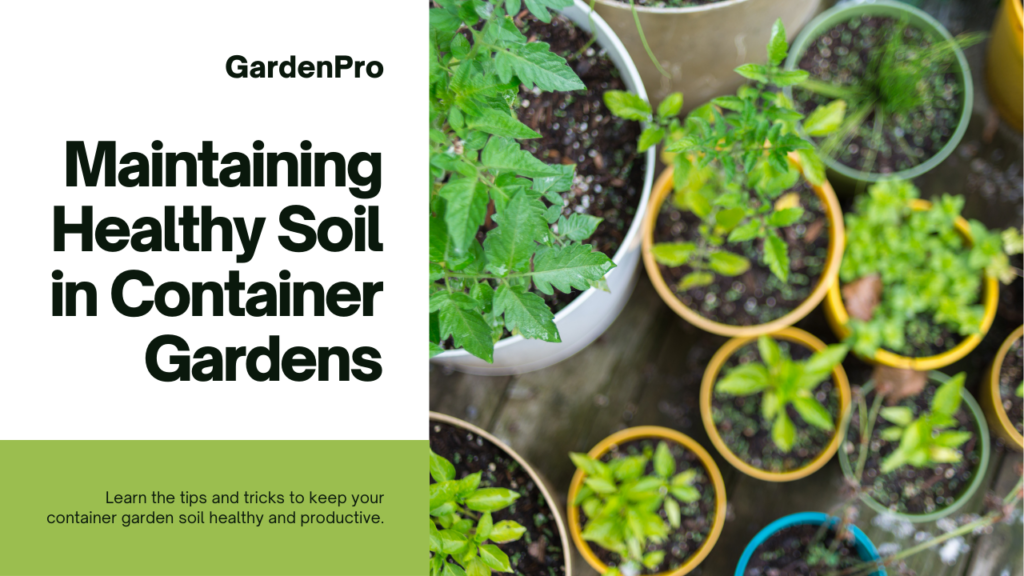
Once you’ve established your container garden, it’s crucial to prioritize the ongoing maintenance of your soil to ensure the long-term health and vitality of your plants. By implementing effective watering techniques, managing soil moisture, promoting aeration, and replenishing nutrients, you can create an optimal environment for your container garden to flourish.
Watering Techniques:
Proper watering is essential for maintaining healthy soil in container gardens. Overwatering or underwatering can lead to issues such as root rot or dehydration, impacting the overall health of your plants. Consider the following watering techniques:
- Water deeply: Ensure that water reaches the entire root zone by watering until it drains freely from the bottom of the container. This encourages deep root growth and prevents the accumulation of excess moisture.
- Monitor soil moisture: Regularly check the moisture level of the soil by inserting your finger into the soil up to your knuckle. If it feels dry, it’s time to water. If it feels moist, delay watering to prevent overwatering.
- Use a watering can or drip irrigation system: Direct water carefully to the base of the plants to minimize moisture loss and prevent foliage from getting wet, which can lead to diseases.
Soil Moisture Management:
Achieving the ideal moisture balance in container gardening soil is crucial for plant health. Here are some strategies to effectively manage soil moisture:
- Proper drainage: Ensure that your containers have drainage holes to prevent water from pooling at the bottom and causing waterlogged soil. Elevating containers on pot feet can also help improve drainage.
- Mulching: Apply a layer of organic mulch, such as bark chips or straw, to the surface of the soil. Mulch helps retain moisture, regulates soil temperature, and reduces weed growth.
- Periodic soil moisture testing: Regularly monitor the moisture level of your soil by using a moisture meter or sticking your finger into the soil. Adjust your watering schedule accordingly to maintain optimal soil moisture levels.
Aeration:
Ensuring proper aeration of the soil is essential for facilitating root respiration and nutrient uptake. Consider the following practices to promote soil aeration:
- Loosening the soil: Gently cultivate the top layer of the soil using a fork or small trowel to break up compacted areas. Avoid disturbing the roots too much to prevent damage.
- Adding perlite or vermiculite: Incorporate perlite or vermiculite into your potting mix to improve soil structure, allowing for better airflow and oxygenation.
- Avoiding overpacking: Avoid compacting the soil when planting or transplanting. Allow enough space for the roots to expand and thrive.
Nutrient Replenishment:
Container gardening soil requires regular nutrient replenishment to support plant growth. Consider the following strategies:
- Fertilize regularly: Use a balanced slow-release fertilizer or organic compost to provide essential nutrients to your plants. Follow the package instructions for application rates and frequency.
- Monitor nutrient levels: Periodically test your soil’s nutrient levels using a soil testing kit. Adjust your fertilization routine based on the results to ensure optimal nutrient balance.
- Consider liquid fertilizers: Incorporate liquid fertilizers into your watering routine for quick nutrient uptake by your plants.
By incorporating these strategies into your regular garden maintenance routine, you can ensure the long-term health and productivity of your container garden, allowing for beautiful and thriving plants.
After delving into the importance of soil in container gardening and exploring the various options available, it is clear that choosing the right soil mix is crucial for the success of your container garden. By understanding the unique requirements of container gardening soil, considering the essential components, and selecting the appropriate potting mix for different plant types, you can create an optimal environment for your plants to thrive.
In conclusion, when choosing the best soil for container gardening, keep in mind the following key takeaways:
- Opt for high-quality organic potting mixes that are rich in nutrients and promote healthy plant growth.
- Consider using peat-based potting mixes for their excellent moisture retention properties.
- Ensure your potting mix has essential components such as perlite or vermiculite for proper drainage and aeration.
- Take into account the specific needs of different plant types and select the appropriate soil accordingly.
By following these guidelines, you can create an ideal growing environment for your plants and set the foundation for a flourishing container garden.
| Key Considerations | Benefits |
|---|---|
| High-quality organic potting mixes | Rich in essential nutrients Promote healthy plant growth |
| Peat-based potting mixes | Excellent moisture retention Help prevent over-drying of plants |
| Essential components (perlite or vermiculite) | Ensure proper drainage and aeration Prevent waterlogging and root rot |
| Choosing soil based on plant needs | Allow for targeted nutrition Cater to specific plant requirements |
“Selecting the right soil mix is like laying the foundation for a successful container garden. It provides the nutrients, moisture retention, and well-draining properties necessary for plant growth. With the right soil, your plants will flourish and reward you with a bountiful harvest or beautiful blooms.” – Mary Smith, Container Gardening Expert
Final Thoughts
Choosing the best soil for container gardening is an essential step in creating a thriving and productive garden. By carefully considering the specific needs of your plants, selecting the appropriate potting mix, and maintaining the health of your soil, you can ensure the success of your container garden for years to come.
Remember to regularly monitor and adjust your watering and fertilization practices based on the unique requirements of your plants. With proper care and attention, your container garden will provide a beautiful and bountiful oasis, filled with vibrant and healthy plants.
Additional Resources and Expert Recommendations
If you’re looking for additional information or expert advice on container gardening soil, we’ve compiled a list of trusted resources and expert recommendations to help you on your gardening journey.
1. Books
Expand your knowledge on container gardening soil with these informative books:
- “Container Gardening Complete” by Jessica Walliser – A comprehensive guide to growing plants in containers, including valuable insights on soil selection and maintenance.
- “The Vegetable Gardener’s Container Bible” by Edward C. Smith – This book offers expert advice for growing vegetables in containers, including tips for soil preparation and managing plant nutrition.
2. Online Resources
Access a wealth of information and practical tips on container gardening soil from these reliable online sources:
- The Spruce – Container Gardening – A trusted gardening website offering in-depth articles, step-by-step guides, and plant-specific advice for container gardening success.
- Gardeners’ World – Container Gardening – Explore this popular gardening platform for expert tips, videos, and inspiration dedicated to container gardening and soil management.
3. Expert Recommendations
Benefit from the experience and wisdom of renowned gardening experts:
“When it comes to container gardening, the quality of the soil can make or break your plants. Invest in a high-quality potting mix with good moisture retention and aeration properties.”
– Jenny Peterson, Professional Gardener
“I highly recommend incorporating compost into your container soil mix. It enriches the soil with essential nutrients, promotes natural pest control, and improves overall plant health.”
– Robert Kourik, Horticultural Consultant
By referring to these resources and heeding expert recommendations, you’ll gain valuable insights and guidance to cultivate thriving plants in your container garden.
FAQ
Q. What is the importance of soil in container gardening?
A. Soil plays a crucial role in container gardening as it provides nutrients, moisture, and support for plant growth. It affects plant health, root development, and overall productivity.
Q. What are the essential components of container gardening soil?
A. The essential components of container gardening soil include organic matter, such as compost or peat moss, to improve nutrient retention, drainage materials like perlite or vermiculite, and a balanced nutrient mix for plant growth.
Q. Which are the best potting mixes for container gardening?
A. The best potting mixes for container gardening are often organic mixes or peat-based mixes. They provide good drainage, retain moisture, and offer a nutrient-rich environment for plant growth. Some popular brands include Miracle-Gro, Espoma, and Black Gold.
Q. Can I create my own soil mix for container gardening?
A. Yes, you can create your own soil mix for container gardening. There are various DIY recipes available. Recipe 1 focuses on creating a lightweight and well-draining mix, while Recipe 2 emphasizes a nutrient-rich blend.
Q. How do I choose the right soil for different plants in my container garden?
A. When choosing soil for different plants in your container garden, consider their specific requirements. Flowering plants generally prefer well-draining soil with increased organic matter, while vegetables may benefit from a nutrient-rich mix containing compost or other organic fertilizers.
Q. How can I maintain healthy soil in my container garden?
A. To maintain healthy soil in your container garden, ensure proper watering techniques to prevent over or under watering. Monitor soil moisture levels, provide adequate aeration through occasional soil loosening, and periodically replenish nutrients with organic fertilizers.
Q. Where can I find additional resources and expert recommendations on container gardening soil?
A. For additional information and expert advice on container gardening soil, you can refer to trusted gardening websites, join online gardening forums or communities, or consult gardening books and magazines. Additionally, expert-recommended brands and product reviews can offer valuable insights.
Conclusion
In conclusion, choosing the best soil for container gardening is vital for the success of your plants. By understanding the role of soil, considering essential components, and selecting the right mix for different plants, you can create an optimal environment for your container garden to thrive.
Proper soil maintenance and watering techniques are also crucial in ensuring the health and productivity of your plants. Regularly monitoring soil moisture levels and providing adequate water, along with periodic fertilization, will help keep your container garden vibrant and flourishing.
Remember to tailor your soil choice to the specific needs of your plants. Whether you are growing flowers, vegetables, or herbs, selecting the right soil composition will play a significant role in promoting robust growth and maximizing yields.
With these considerations in mind, you are now well-equipped to embark on your container gardening journey. Enjoy the gratifying experience of cultivating a thriving garden within the confines of your containers, and reap the rewards of fresh produce, beautiful blooms, and a green haven in any space.


